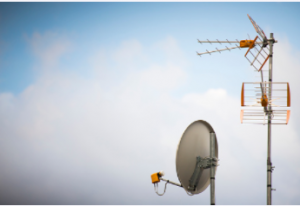How do you decide which TV antennas will work best for your needs? There are so many types and brands of TV antennas available today. The first step is to learn the factors that affect TV antenna performance to choose a suitable antenna. This way, you will know what you need to consider before purchasing the correct antenna type.
Factors affecting television reception include TV antenna installation location, TV broadcast equipment, cable or satellite provider, and TV viewing habits. Factors that impact television reception are signal strength, antenna placement, TV broadcast equipment, cable or satellite provider, and your TV viewing habits. What matters most is that you get good reception. To achieve good reception, here are some tips to help you choose the right antenna type and model:
 TV antenna installation location. Some TV antennas are compatible only with fixed locations like in an open patio or on a roof. If you want to put the antenna on a freestanding roof, there are TV roof mount installation considerations to consider. These include the height of the TV’s mast, the distance from the TV’s mast to the roof, the cable or satellite feed direction, and the cable or satellite provider.
TV antenna installation location. Some TV antennas are compatible only with fixed locations like in an open patio or on a roof. If you want to put the antenna on a freestanding roof, there are TV roof mount installation considerations to consider. These include the height of the TV’s mast, the distance from the TV’s mast to the roof, the cable or satellite feed direction, and the cable or satellite provider.
TV antennas must be installed appropriately to receive strong signals. In addition, TV antennas need to be placed in a strategic location to receive the necessary signals. It means that you will need the help of an expert installer or TV reception site surveyor. A qualified antenna installation professional will help you find the right spot for your tv antenna installation.
TV antenna installation location must be related to the amount of signal strength needed. To determine this, the TV reception site surveyor can use a directional antenna analyzer device to measure the strength of the signal each time it is transmitted. The result is a zone that describes the location of the antenna within a square yard of the TV’s broadcast receiver. This measurement is an essential factor in choosing a good position for the antenna. For example, it would help if you chose a spot with plenty of free space for receiving solid signals, a site with a clear view of the southern sky, no nearby trees or power lines, and a site with low signal interference.
You are choosing the right tip. When it comes to successfully installing your TV antenna by yourself, a tip from an experienced installer can be constructive. Experienced signal boosters can also help you determine which direction is best for your antenna. For example, if you are looking for a stronger signal, a tip to consider is tilting the antenna away from the dish receiver. The reason for this tip is that the dish usually receives a more robust signal when the tip is perpendicular to the azimuth of the receiver. In addition, the dish will receive a more robust signal if you tilt the tip because it is closer to the horizon.
Three standard tv antenna installation options are mounting to a ceiling mount, installing a wall mount, and mounting to a tripod. Ceiling mounts are the most popular way of installing antennas because they are typically the easiest to install. A push-button typically powers ceiling mounts, and they offer easy access to any place in your house. If you choose a ceiling mount, make sure you have it appropriately adjusted so that the antenna is pointed directly at the signal source. Some people prefer to install antennas on their roofs; however, this is harder to do and requires more work and expertise.
Wall mounting is the most challenging way to install an indoor or outdoor antenna but is probably the most rewarding because it offers the most flexibility. It is the most difficult of the three installation options because it requires specialized equipment that most people do not have lying around their homes. However, if you have the right tools, this is probably the best way to get the maximum performance out of your new equipment. With a wall mount, you can usually expect a muscular signal strength of 200 watts or better. To receive an even stronger reception, you can install an outdoor antenna capable of receiving stronger signals.
